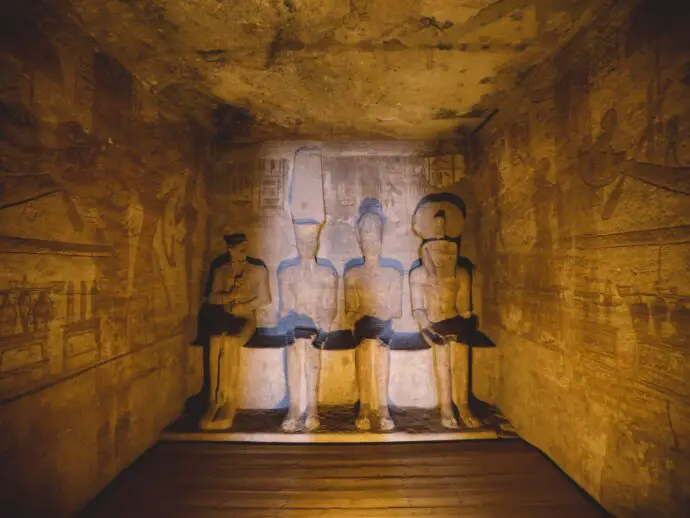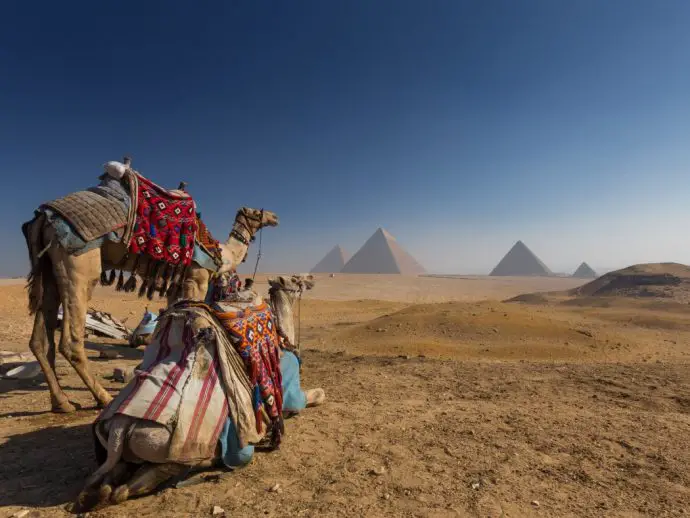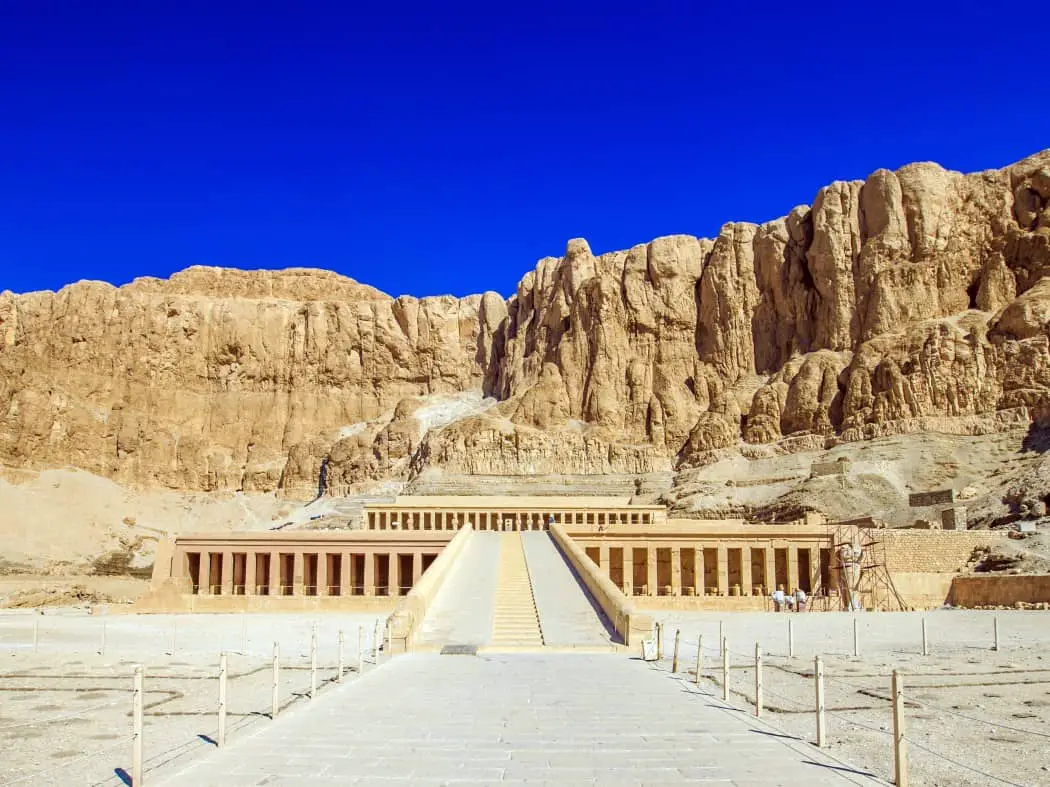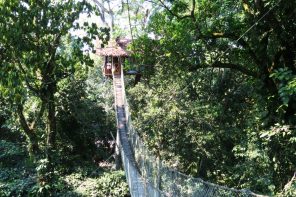There are a couple of things that Egypt has in abundance: sand and sun. The latter is celebrated with great revelry throughout the year with celebrations that would make Ra proud! These astronomical events, where the sun aligns perfectly with ancient temples, aren’t just a testament to the Egyptians’ architectural prowess. They’re also a cracking excuse for a holiday. So, grab your sunhat, get your Egypt e-Visa in the bag, and let’s explore Egypt’s most dazzling solar spectacles on Earth.
Abu Simbel
There is no better place to start than with the granddaddy of them all – the bi-annual sun alignment at Abu Simbel. This temple, built by Pharaoh Ramses II, hosts what’s unarguably the most famous solar phenomenon in Egypt.
Twice a year, on 22 February and 22 October, the rising sun penetrates the temple’s inner sanctum, illuminating the statues of Ramses II and two of the three gods seated beside him. The god of darkness, named Ptah, stays in the shadow – this is the third god. It’s like a 3,200-year-old light show, only with less EDM and more ancient mysticism. The February date is believed to commemorate Ramses II’s ascension to the throne, while the October date celebrates his birthday. Nothing quite says ‘happy birthday to me’ like a massive temple that lights up on your special day.

To experience this phenomenon, you should make your way to the temple well before dawn. Yes, that means dragging yourself out of bed at an ungodly hour, but trust us, it’s worth it. As the sun rises and the light creeps into the temple, you can almost hear the Indiana Jones theme tune playing in your head.
But, travellers beware. You have to book well in advance. This event draws crowds from all over the world, and space inside the temple is limited. Unless you fancy watching the whole thing on a big screen outside, get your spot reserved early. Also keep in mind that it is in the far south of the country, close to the border of Sudan, so travel plans are a little more complex than hopping on a camel from Cairo.
Karnak Temple, Luxor
Next up on our solar-powered tour of Egypt is Karnak Temple in Luxor. This massive complex hosts a spectacular celestial show during the summer solstice when, on 21 June each year, the rising sun aligns perfectly with the central axis of the temple. The light beams through the hypostyle hall, illuminating the sacred lake and the inner sanctum.
What makes this event particularly special is that it’s not just a one-and-done deal. The alignment lasts for about 45 minutes, giving you ample time to snap that perfect shot. Just remember these things are best experienced in real-time, not through a phone screen.
Note: Luxor gets sweltering hot in June. Bring water, sunscreen, and maybe one of those little battery-powered fans. Looking cool might be a lost cause, but at least you won’t melt.
Pyramids of Giza
Now, let’s not forget the pièce de resistance of Egyptian monuments – the Pyramids of Giza. While they don’t have an interior light show like some of their flashier temple cousins, they put on spectacular sunset performances multiple times per year that are not to be missed.

On the spring and summer equinox dates, the sun is directly above the equator. As it dips towards the horizon, it aligns perfectly between two of the pyramids when viewed from the Sphinx (Khufu and Khafre). As the sun sinks lower, it appears to be ‘swallowed’ by the Sphinx, echoing the ancient Egyptian belief that the Sphinx guarded the gate to the underworld.
Thanks to the genius alignment of the pyramids with the sun, moon, and constellations, the winter and summer solstices also bring a special show. Be prepared for crowds though. But don’t let that put you off. There’s something rather lovely about sharing this moment with people from all over the world, all united in their awe of this ancient wonder.
After the sun has set, stick around for the sound and light show. Yes, it’s touristy, and yes, the narration is cheesy. But there’s something undeniably cool about seeing the pyramids and the Sphinx lit up against the night sky. Plus, it’s a great opportunity to learn about Egyptian history without having to squint at tiny museum placards.
Timing is Everything
Now, before you rush to book your flight, a word of caution. These events happen on very specific dates, and the Egyptian climate isn’t exactly forgiving. So, keep in mind that the summer solstice is the longest day of the year, making your time in the heat a few minutes longer.
So if you’re heading to Karnak for the solstice, prepare for some serious heat. We are talking temperatures that easily reach 40°C. Winter can also be surprisingly chilly, especially in the early mornings, so pack layers if visiting during these months is on your to-do list.
Final Thoughts
Witnessing these sun festivals isn’t just about ticking off another item on your Egypt bucket list. It’s about connecting with a civilisation that existed thousands of years ago. As you stand in these ancient temples, watching the same celestial dance that people have been observing for millennia, you can’t help but feel a sense of awe and connection to the past.
So, whether you’re a history buff, an astronomy enthusiast, or just someone who appreciates a good light show, Egypt’s sun festivals have something for everyone. Don’t forget to set an alarm, charge up your camera batteries the day before, and get ready for an incredible spectacle. After all, it’s not every day you get to see the sun putting on a performance that’s been running for over 3,000 years. Now that’s what we call a long-running show!





